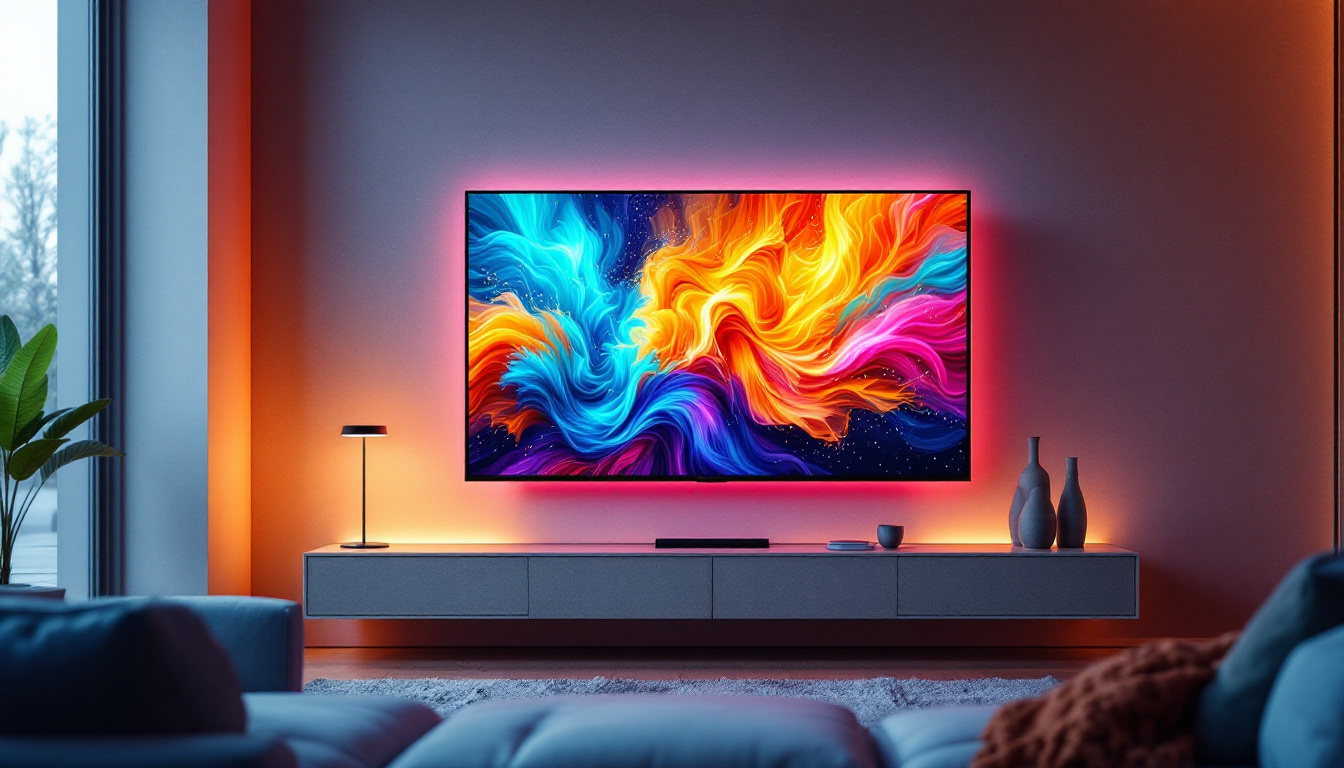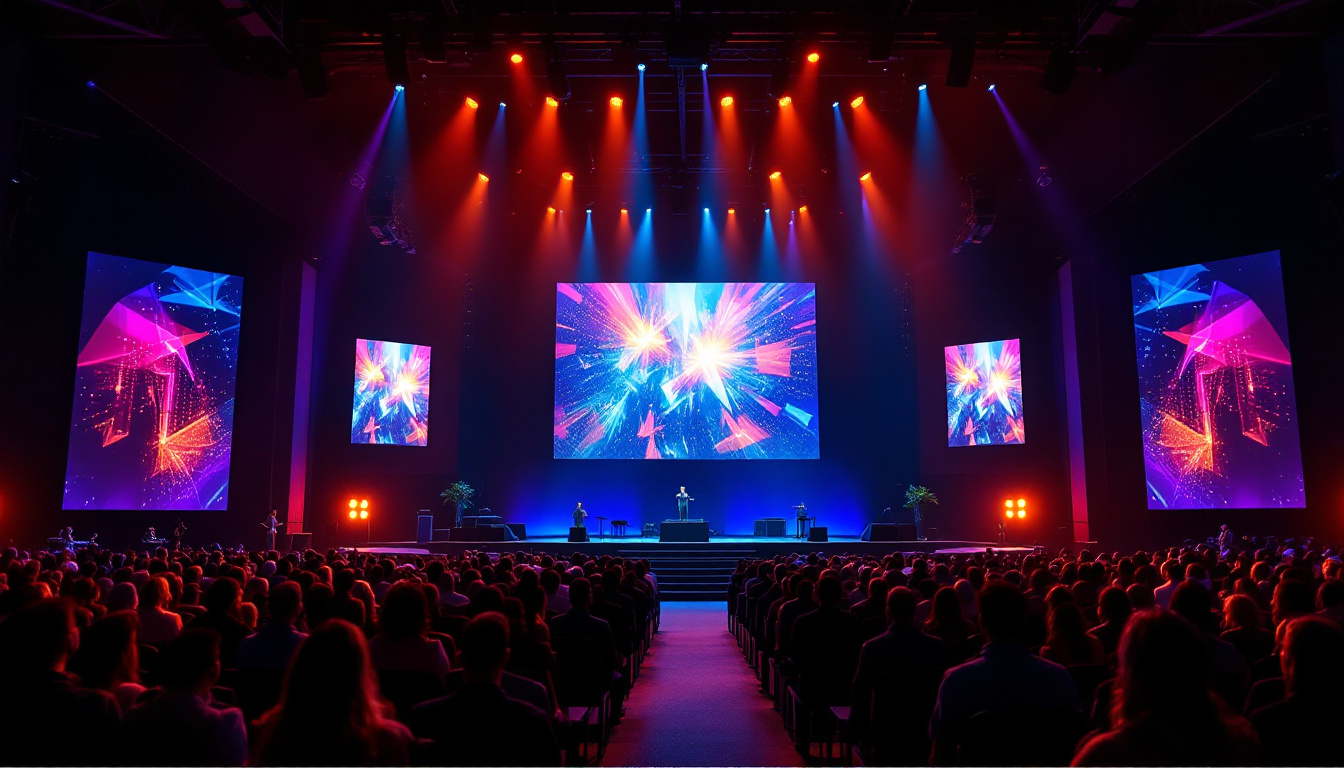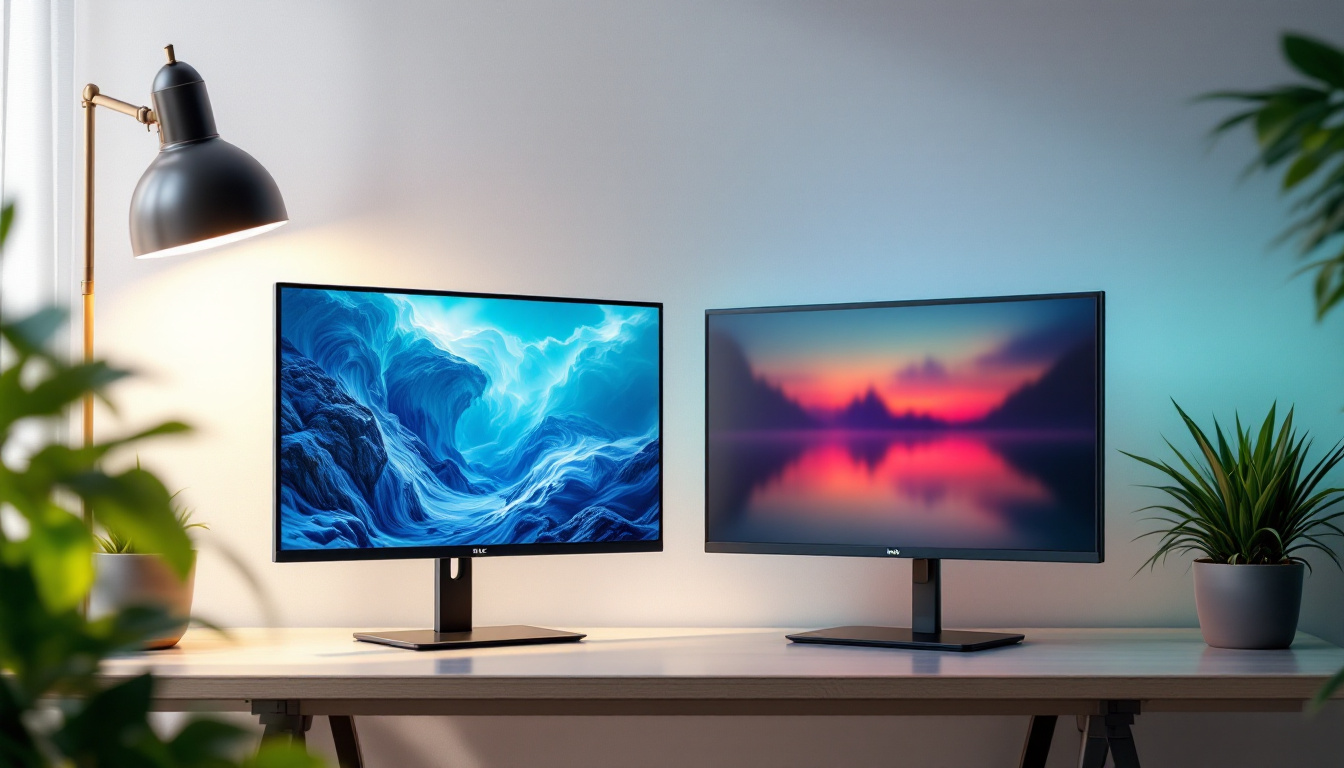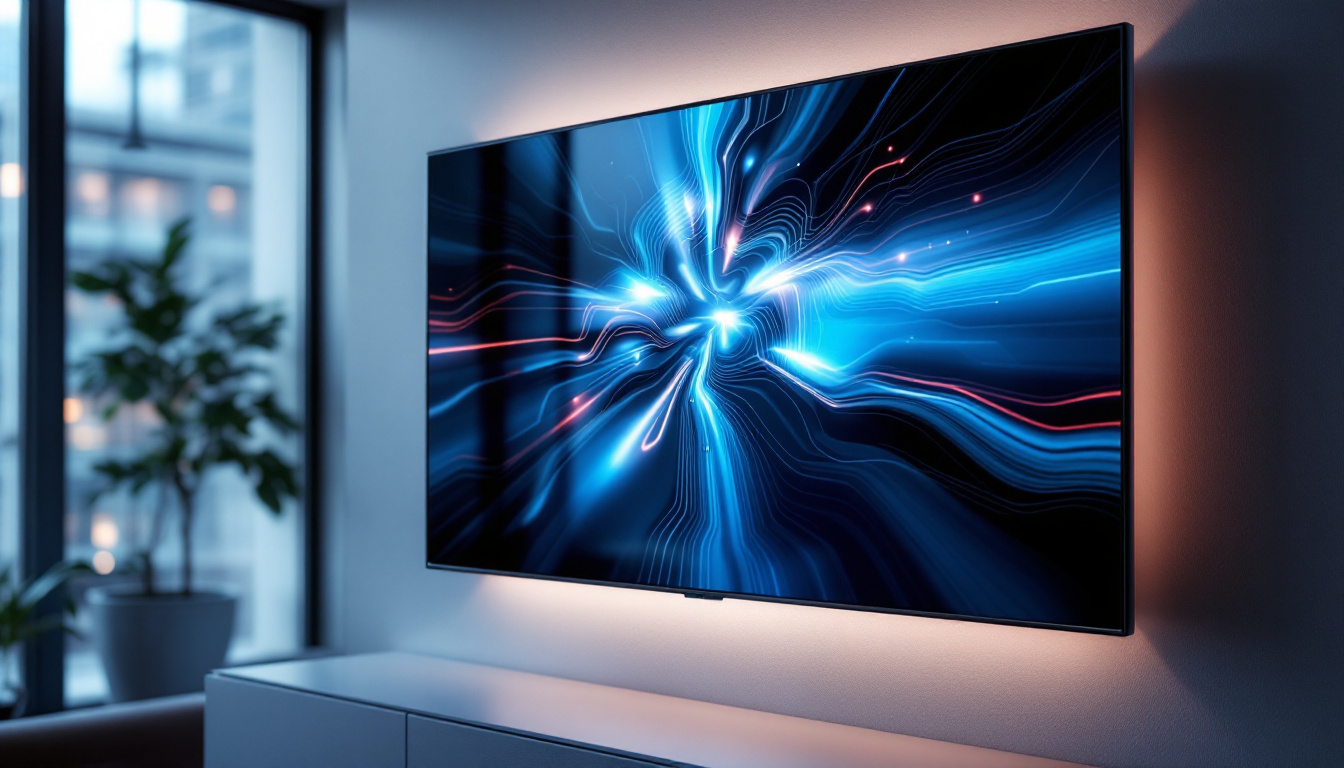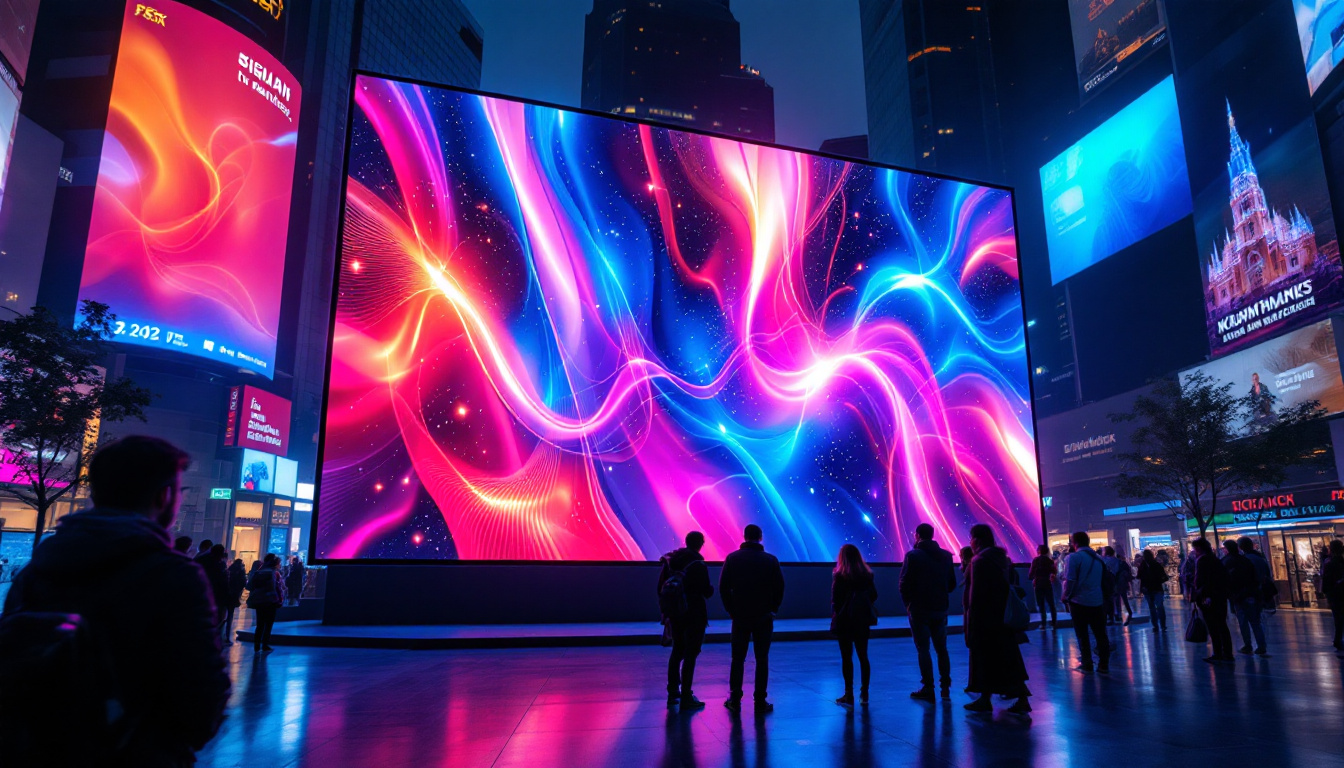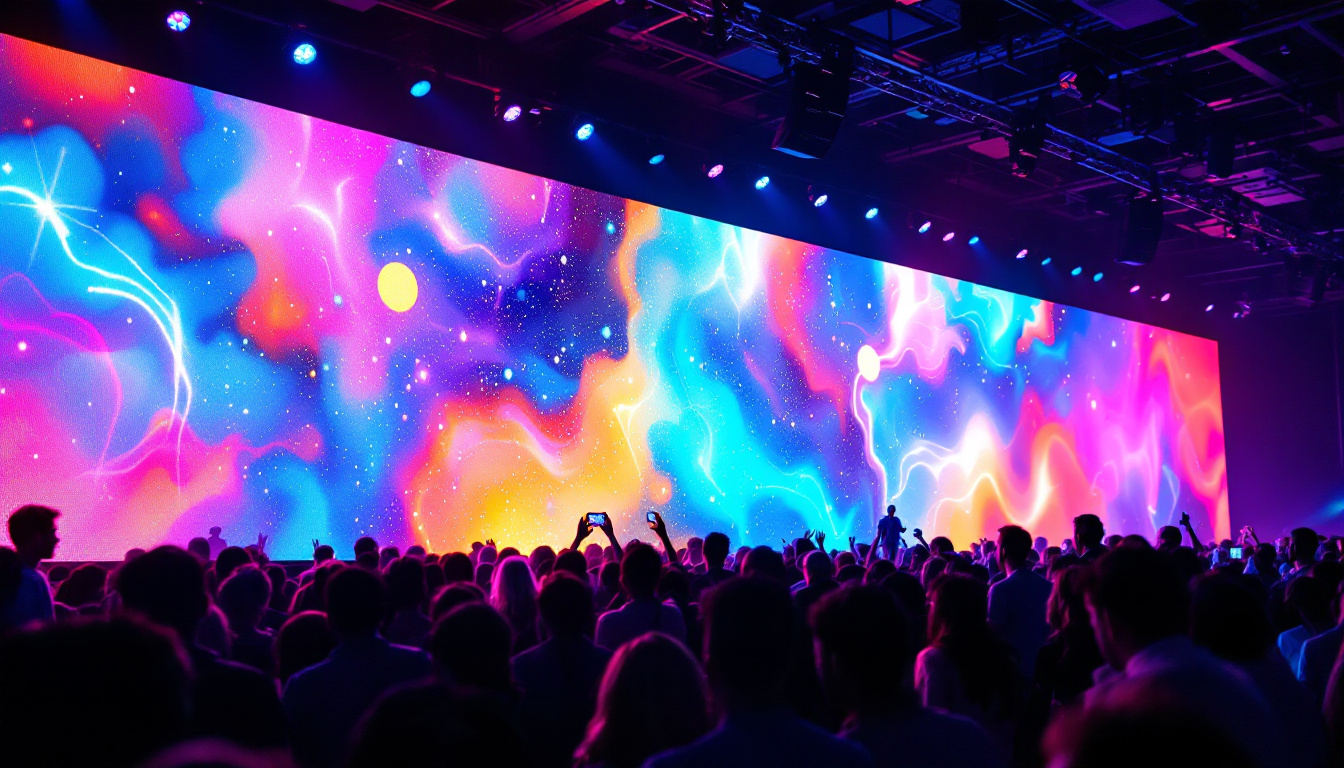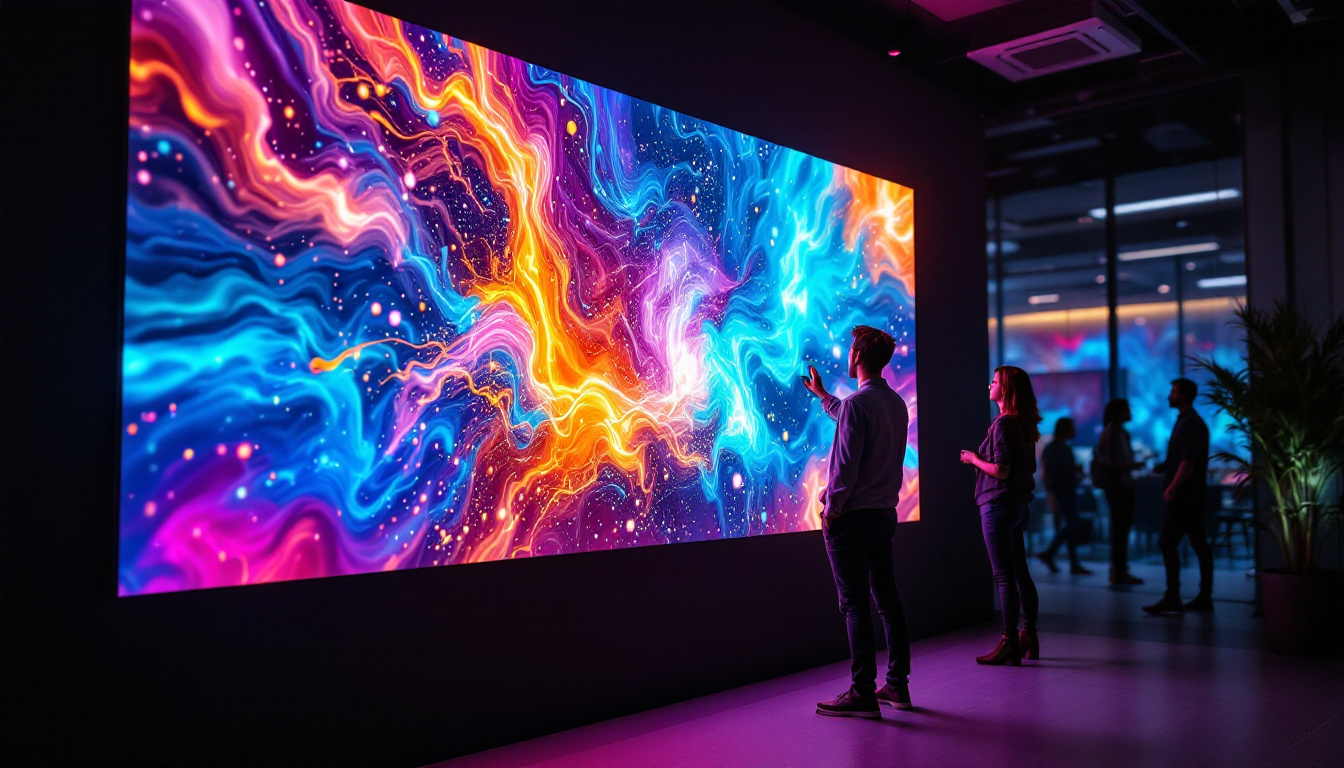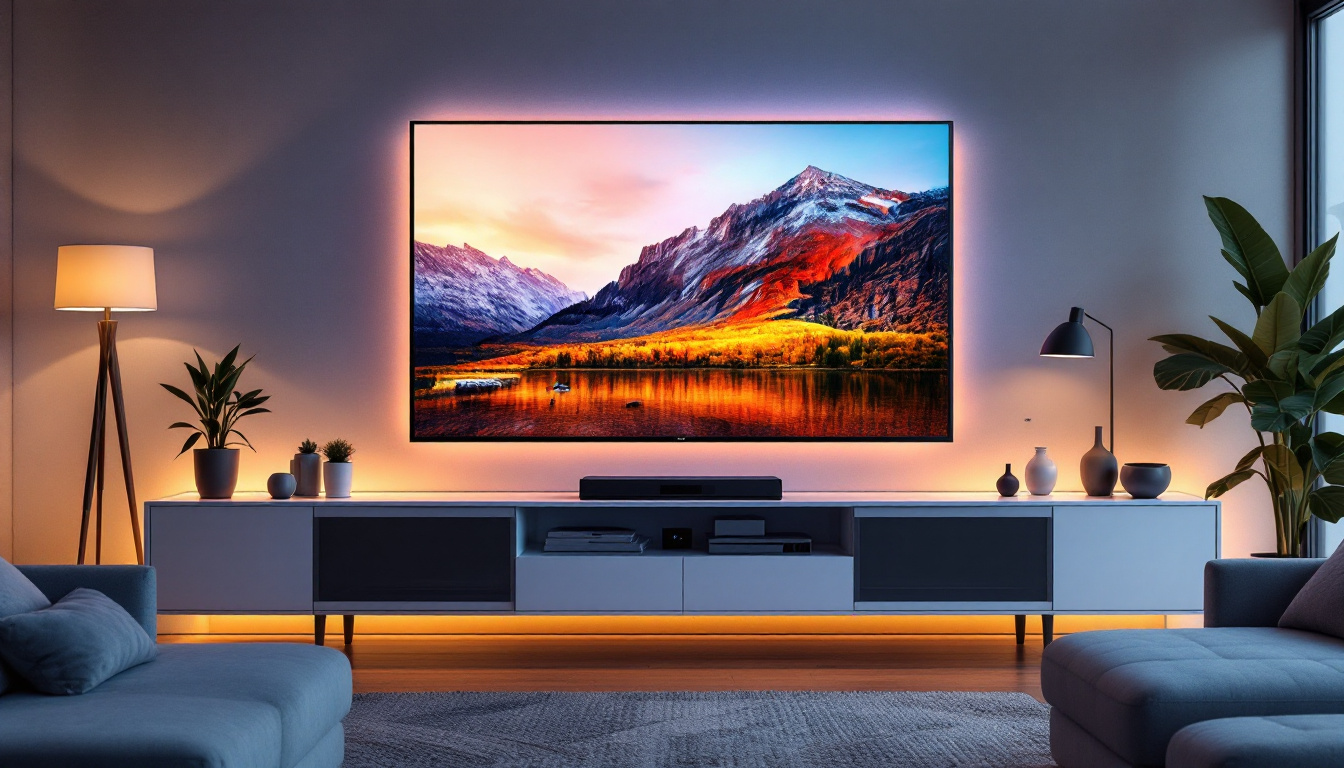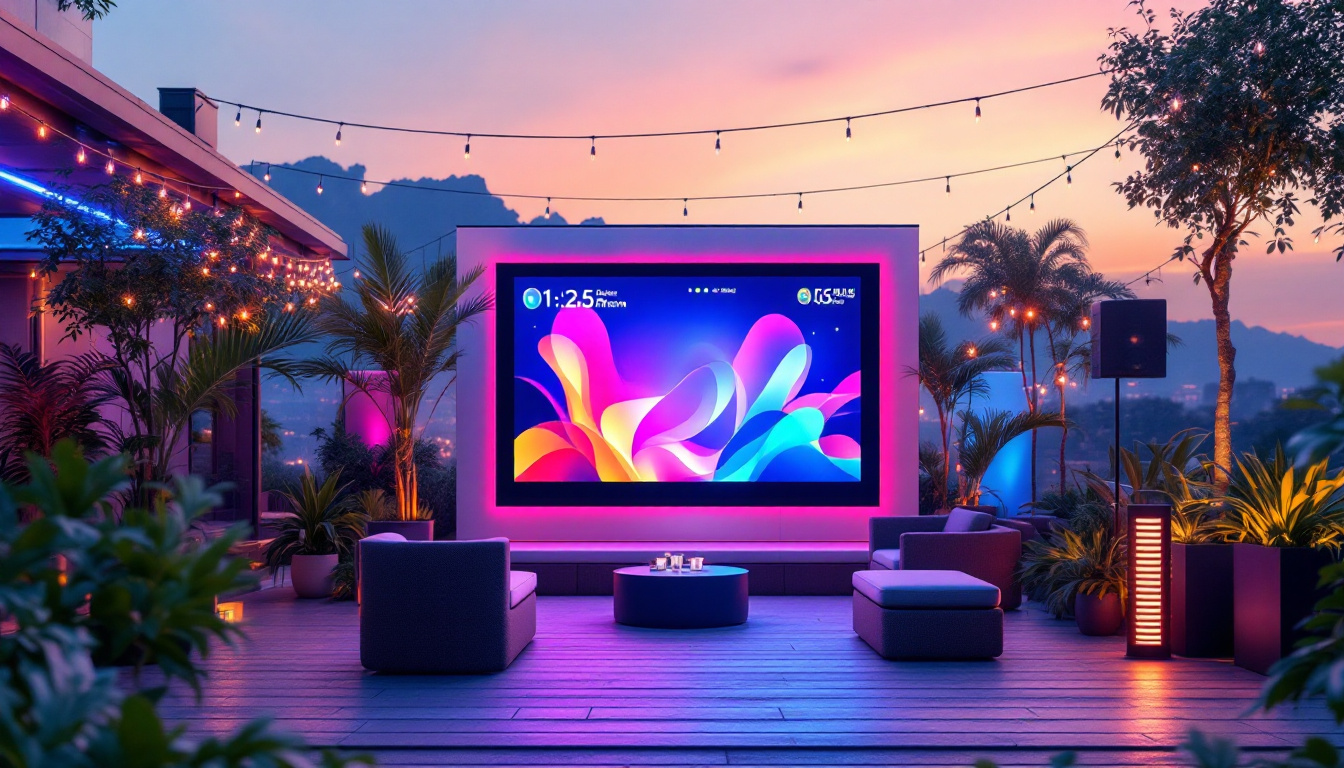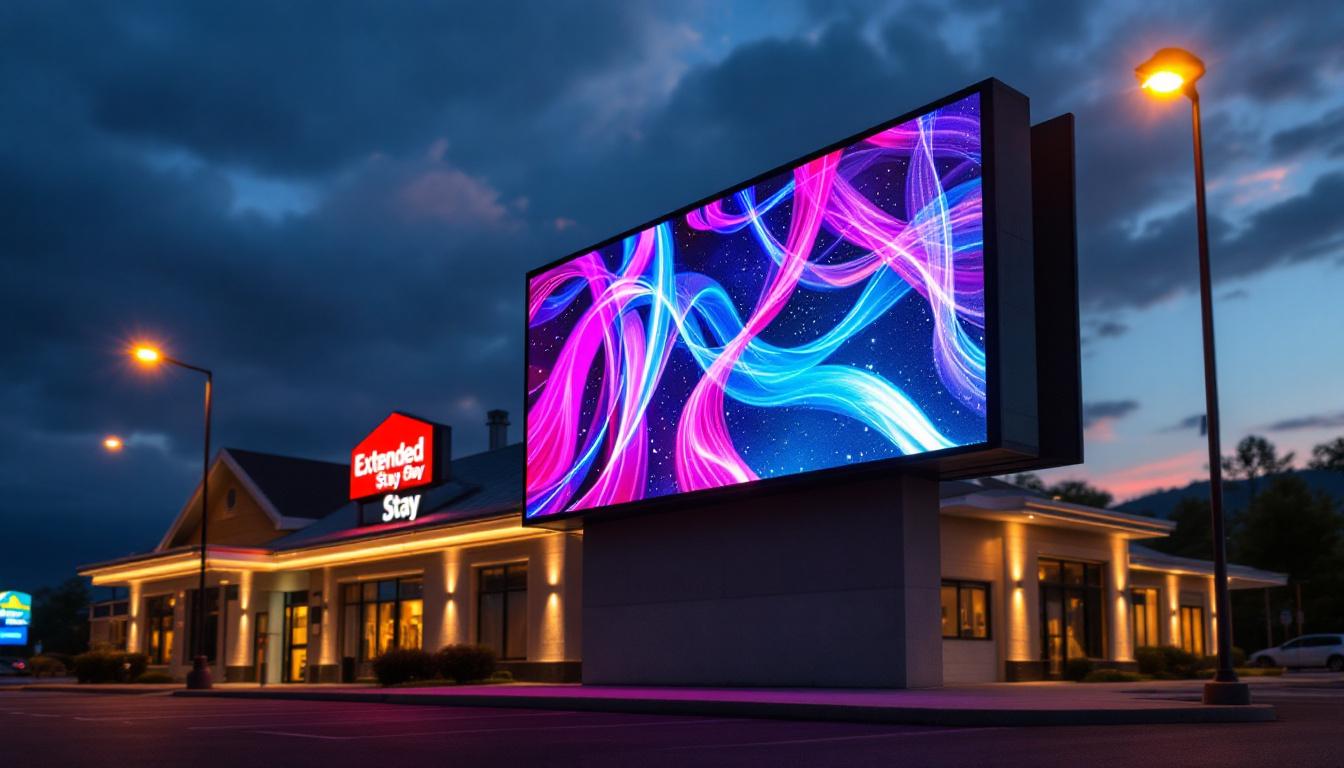Panel TVs: LED Display Explained
In the world of modern television technology, LED displays have become a dominant choice for consumers seeking high-quality visual experiences. Understanding how LED displays work and the advantages they offer can help in making informed decisions when purchasing a new television. This article delves into the intricacies of LED technology, its various types, and the benefits it brings to the viewing experience.
What is an LED Display?
LED, or Light Emitting Diode, displays utilize a series of tiny diodes to produce images on screen. Unlike traditional LCD screens that rely on fluorescent backlighting, LED displays use these diodes to create brighter images with enhanced contrast and color accuracy. This technology has revolutionized the way we view content, providing a more vibrant and immersive experience. The ability to produce deeper blacks and brighter whites allows for a more dynamic range of colors, making everything from movies to video games visually stunning.
How LED Displays Work
The core of LED technology lies in its ability to emit light when an electric current passes through it. In an LED display, thousands of these diodes are arranged in a grid. Each diode can be individually controlled to create different colors and brightness levels, allowing for a wide range of hues and shades. This precise control over light output results in sharper images and deeper blacks compared to older technologies. Moreover, the rapid response time of LEDs contributes to smoother motion, which is particularly beneficial for fast-paced content such as sports or action films.
There are two primary types of LED displays: edge-lit and backlit. Edge-lit LED displays have diodes placed along the edges of the screen, which light up the display from the sides. This design allows for thinner screens but may result in uneven lighting. Backlit LED displays, on the other hand, have diodes positioned directly behind the screen, providing more uniform brightness and better contrast. Additionally, some advanced models utilize local dimming technology, which enhances contrast even further by dimming specific areas of the screen while keeping others bright, thus improving the overall viewing experience.
The Evolution of LED Technology
LED technology has evolved significantly since its inception. Initially, LED displays were mainly used in small screens or signage. However, advancements in manufacturing and design have led to larger screens that can be used for home entertainment. As technology progressed, features such as 4K resolution, HDR (High Dynamic Range), and smart capabilities were integrated into LED displays, enhancing their appeal and functionality. The introduction of OLED (Organic LED) technology has also pushed the boundaries of LED displays, offering even greater contrast ratios and color accuracy by allowing each pixel to emit its own light.
Furthermore, the rise of LED technology has not only transformed consumer electronics but has also made a significant impact in various industries. From advertising billboards that capture attention with vibrant colors to medical imaging devices that require high precision, LED displays are now ubiquitous. The energy efficiency of LED technology also contributes to its growing popularity, as it consumes less power compared to traditional display technologies, making it a more sustainable choice for both consumers and businesses alike. As we look to the future, innovations in LED technology continue to emerge, promising even more exciting developments in display capabilities and applications.
Types of LED Displays
Understanding the different types of LED displays can help consumers choose the right television for their needs. Each type has its own unique characteristics, advantages, and potential drawbacks.
Edge-Lit LED Displays
Edge-lit LED displays are popular for their slim design and affordability. These screens use a series of LEDs placed around the perimeter of the display, which shine light across the screen. While edge-lit displays can be thinner and lighter, they may suffer from issues like uneven brightness and limited viewing angles. However, they are often sufficient for casual viewing and can be a great choice for smaller rooms. Additionally, many edge-lit models come equipped with features such as smart TV capabilities, allowing users to stream content directly from the internet, which enhances their appeal for budget-conscious consumers looking for modern functionality.
Full-Array LED Displays
Full-array LED displays feature a grid of LEDs behind the entire screen, allowing for more uniform lighting and improved contrast. This technology enables local dimming, where specific areas of the screen can be dimmed or brightened independently, resulting in deeper blacks and brighter highlights. Full-array displays tend to be more expensive than edge-lit models, but they provide a superior viewing experience, especially for movie enthusiasts and gamers. Furthermore, many full-array LED displays support advanced HDR (High Dynamic Range) formats, which significantly enhance the color and brightness range, making them ideal for high-quality content. As a result, these displays are often favored by those who prioritize picture quality and immersive viewing experiences.
OLED vs. LED Displays
While LED displays are widely popular, OLED (Organic Light Emitting Diode) technology has also gained traction in recent years. Unlike LED displays, which rely on backlighting, OLED screens emit their own light. This allows for even greater contrast ratios and color accuracy, resulting in stunning visuals. However, OLED displays can be more expensive and may be prone to burn-in issues, where static images can leave a permanent mark on the screen. Despite this drawback, many manufacturers have implemented various technologies to mitigate burn-in risks, such as screen savers and pixel-shifting techniques. Additionally, OLED displays are known for their ultra-thin profiles and wide viewing angles, making them a popular choice for those who desire a sleek design coupled with top-tier performance. As the competition between OLED and LED technologies continues to evolve, consumers are presented with a broader range of options tailored to their specific viewing preferences and budgets.
Benefits of LED Displays
LED displays offer numerous advantages over traditional television technologies, making them a preferred choice for many consumers. From energy efficiency to superior picture quality, the benefits are substantial.
Energy Efficiency
One of the most significant advantages of LED displays is their energy efficiency. LED technology consumes less power compared to older LCD and plasma screens, making them more environmentally friendly and cost-effective in the long run. This efficiency not only reduces electricity bills but also contributes to a smaller carbon footprint.
Picture Quality
LED displays are renowned for their exceptional picture quality. With higher brightness levels, improved color accuracy, and better contrast ratios, LED TVs can deliver stunning visuals that enhance the viewing experience. Whether watching movies, playing video games, or streaming content, the clarity and vibrancy of LED displays make every scene come to life.
Durability and Longevity
LED displays are generally more durable than their predecessors. The solid-state nature of LEDs means they are less susceptible to damage from shocks and vibrations. Additionally, LED technology has a longer lifespan, often lasting over 50,000 hours of use. This longevity ensures that consumers can enjoy their investment for years without worrying about significant degradation in performance.
Choosing the Right LED TV
When selecting an LED TV, several factors should be considered to ensure the best fit for individual needs and preferences. From screen size to resolution, making an informed choice can significantly enhance the viewing experience.
Screen Size
Screen size is a crucial factor when purchasing a television. The ideal size depends on the viewing distance and the size of the room. Generally, larger screens provide a more immersive experience, but they should be chosen according to the available space. A common guideline is to sit at a distance of 1.5 to 2.5 times the diagonal size of the screen for optimal viewing.
Resolution
Resolution refers to the number of pixels displayed on the screen, with higher resolutions providing sharper images. Common resolutions include Full HD (1080p), 4K (2160p), and even 8K in some premium models. While 4K has become the standard for new TVs, considering the content available and the viewing distance is essential when deciding on the resolution.
Smart Features
Many modern LED TVs come with smart features, allowing users to stream content directly from popular platforms like Netflix, Hulu, and YouTube. These smart TVs often include built-in Wi-Fi, voice control, and compatibility with smart home devices. When selecting a TV, it’s worth considering whether these features align with your viewing habits and lifestyle.
Common Misconceptions about LED Displays
Despite their popularity, several misconceptions about LED displays persist. Addressing these myths can help consumers make more informed decisions.
LED Displays are the Same as LCD Displays
A common misconception is that LED displays are simply another name for LCD displays. In reality, LED displays are a type of LCD that uses LED backlighting instead of traditional fluorescent lights. This distinction is important as it influences picture quality, energy efficiency, and overall performance.
All LED Displays are the Same
Another myth is that all LED displays offer the same quality. In truth, there are significant differences between edge-lit and full-array LED displays, as well as variations in resolution, refresh rates, and additional features. Understanding these differences is crucial for selecting the right television.
LED Technology is Outdated
Some consumers may believe that LED technology is becoming outdated due to the rise of OLED displays. However, LED technology continues to evolve, with advancements in brightness, color accuracy, and energy efficiency. LED displays remain a popular choice for their affordability and performance, making them a viable option for many households.
Conclusion
LED displays have transformed the television landscape, offering consumers a blend of quality, efficiency, and longevity. Understanding the various types of LED technology, their benefits, and how to choose the right model can enhance the viewing experience and ensure satisfaction for years to come. As technology continues to evolve, LED displays will likely remain at the forefront of home entertainment, providing stunning visuals and immersive experiences.
As the market continues to expand with new features and advancements, staying informed about the latest developments in LED technology will help consumers make the best choices for their viewing preferences. Whether it’s for binge-watching the latest series, enjoying a movie night, or gaming, LED displays offer a compelling option that meets diverse needs.
Explore Cutting-Edge LED Displays with LumenMatrix
Ready to elevate your viewing experience with the latest in LED display technology? Look no further than LumenMatrix, a pioneer in crafting innovative LED display modules designed to bring your visual communication to life. Whether you’re in need of an Indoor LED Wall Display for your business, an Outdoor LED Wall Display for advertising, or even specialized solutions like Vehicle LED Displays and LED Sports Displays, LumenMatrix has you covered. Embrace the future of digital signage with our captivating LED Poster Displays, Floor LED Displays, and the versatility of Custom and All-in-One LED Display options. Discover the transformative power of LED Transparent Displays and see how LumenMatrix is redefining the art of visual storytelling. Check out LumenMatrix LED Display Solutions today and join the revolution in high-impact, energy-efficient display technology.

